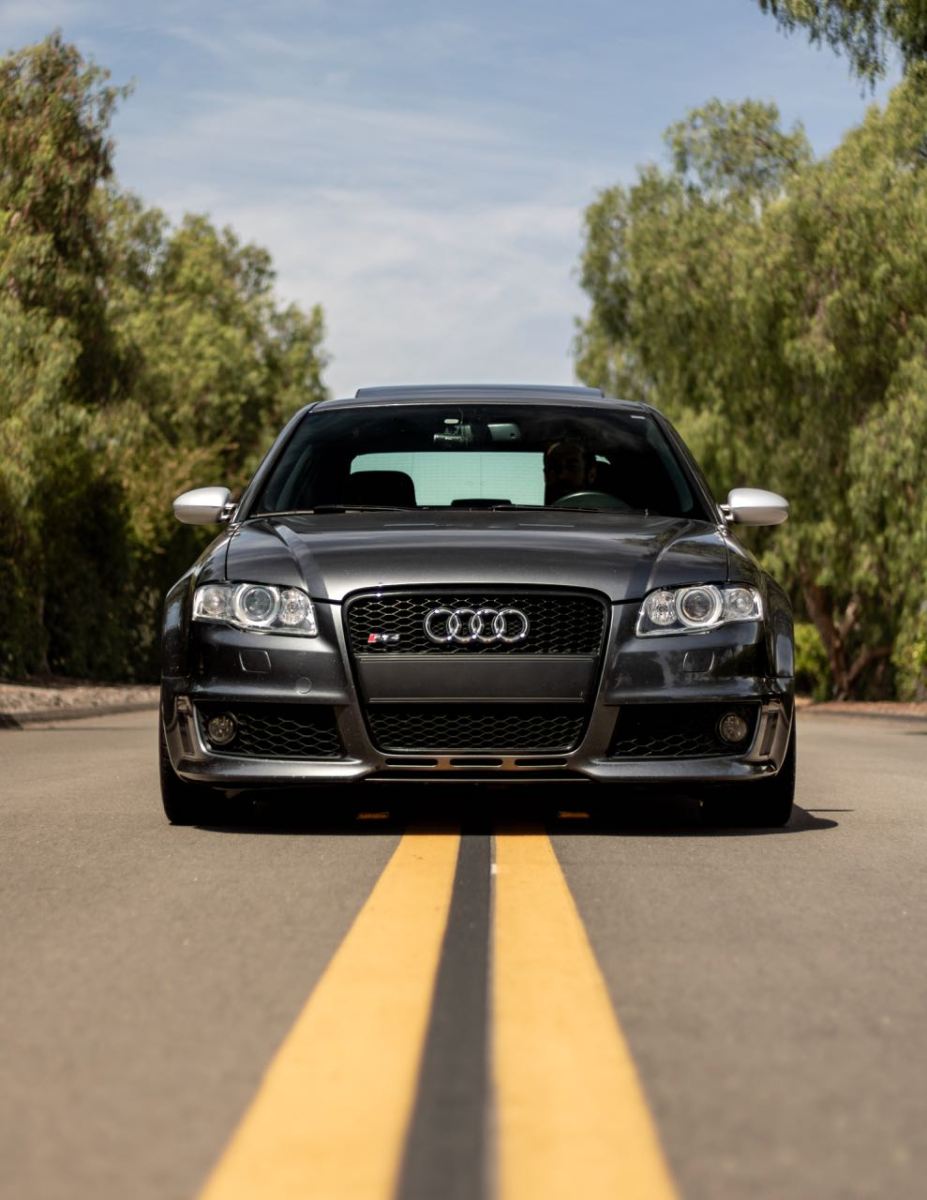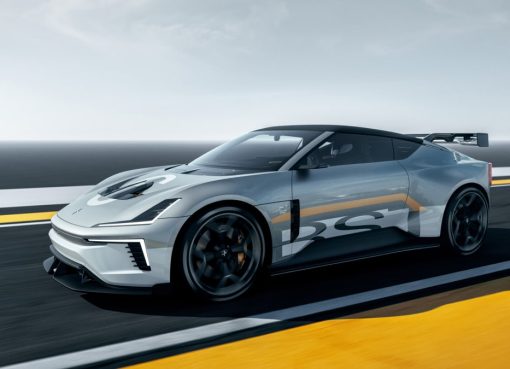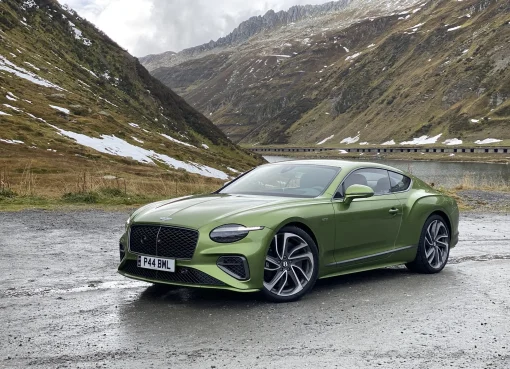B7 Audi RS4 Maintenance & Buyers Guide – Nick’s Car Blog

The B7 (2007-2008) Audi RS4 is special for many reasons; first and foremost, it was the only two years that Audi ever brought the RS4 to America. It’s also the only widebody Audi sedan sold with a manual transmission and a V8…and even though the market is starting to heat up, it’s still one of the best bargains for Audi enthusiasts who want a ridiculously fun car for under $30K.
Whether deserved or not, the car has reputation for being high maintenance…after almost a year of ownership, plus tons of research on forums, owners groups, and speaking with fellow owners – I’m here to shed some light on this topic from the experience of hundreds of enthusiasts.
For those who don’t want to skip ahead – my firm belief is that this car is incredibly reliable for an enthusiast vehicle. The catch, of course, is to keep up with the preventative maintenance. If you’re thinking of buying one, understanding what has been done recently (or not) will help you understand if you’ve got a lot of bills coming up or not…but to those who take care of the car, you can expect the engine to last well over 200K miles of fun.
B7 RS4 Ownership Myths Debunked:
The reputation of the car being “high maintenance” on the forums are largely a combination of ignorance/confusion, plus the sting of new RS4 owners who bought a poorly maintained car and had to foot a big bill of items once they got the car – ironically once those initial items are fixed, the majority of owners can have troublefree ownership for many years to come…but it’s a human bias to remember the sting of the cost, and conveniently forget all of the times that nothing happened.
Nonetheless, here are some cold hard facts to know:
Timing chains/guides are not a problem on the RS4 – the biggest myth is people worrying about the timing chains (and specifically the plastic guides) on this car…that issue is only specific to the B7 S4 engine, and NOT the RS4. While both the S4 and RS4 have V8s of the same size (4.2L), these are entirely different engines. The RS4 has the BNS motor which is higher revving (8,250 RPM redline) and produces more power, as well as has direct injection. You do not need to worry about the timing chain service here, so I’d argue the RS4 is actually less risky/lower maintenance than the S4.
Maintenance costs are reasonable for what you’re buying – individual service items are all fairly reasonably priced…there are few maintenance items where an engine out service is required, and the cost of parts is all pretty reasonable since they’re mostly shared from other Audi models…so parts are readily available and reasonably affordable. The challenge is if you buy a used one with years of maintenance deferred – you’re basically paying one lump sum upfront to make up for years of neglect, so of course that will be more expensive.
The motor can last a very long time – I know many RS4 owners who have daily driven their vehicles over 200,000 miles, and this situation is not uncommon. This car is frequently daily driven, and not that it’s been out for 11+ years there are many examples still on the road that are well north of 100K miles without any major issues.
Carbon cleaning has gotten cheaper – Expect to pay about $1,200 (plus or minus about $200 depending on where you live) for a good carbon cleaning. Ideally you should do this every 20-30K miles, although I know of some owners who do it a lot less frequently. Even if you’re daily driving the vehicle, that’s about $1,200 every 2-3 years of driving…about the set of a cost of tires (and about the lifespan of a set of tires, too!).
So with those common myths debunked – what do you need to know about RS4 ownership?
Important Preventative Maintenance for the RS4

Dynamic Ride Control (DRC) – the car came with an early version of magnetic ride. While the car has a nice ride when working properly, these systems are prone to failure over time and mileage…if you buy one that is still on the original DRC suspension, chances are that the struts are already leaking, or will again soon. Maintaining this system is costly and difficult, so most owners inevitably replace the system with a nice set of coilovers. Expect to pay anywhere from $1K installed for a more budget oriented setup (H&R Springs, Bilstien struts, alignment + install) to over $4K for KW V3s…but the nice part is that you won’t need to worry about this again for a very long time.
Carbon Cleaning – as noted earlier, you should carbon clean the car every 20-30K miles. You could definitely do this more often if you wanted, as carbon starts building up immediately, but the decline in horsepower is gradual so you can get away with deferring it somewhat. If you go too long, you may get some misfires and the engine won’t be running optimally, so if you don’t have any records of this ever being done on your car, do it now.
Intake Manifold Flap Failure – on a small but not insignificant number of vehicles, the flaps on the intake manifold will fail in one of two ways…either the arms will get stuck giving you an error code, or after a few carbon cleans one of the screws on the flap system will come loose, fall into your heads, and destroy the engine. As such, most RS4 owners elect to “de-flap” the vehicle, which means removing the flaps entirely and replacing with $30 plugs you can buy from JHM. You can do this during a carbon clean so there is the additional labor is minimal (maybe 1 hour, tops, to remove the flaps and install the plugs). The only downside is a slightly rougher cold start, and in cold climates it may take the engine longer to warm up. If you’re in a northern climate then you could consider replacing the arms with billet ones from 034, and using loctite on the flap screws, but for everyone else – just remove them during the next carbon clean and save yourself from a potentially catastrophic failure for $30…
Injector failure – another rare but catastrophic event is if the fuel injectors fail/disintegrate over time, then eventually parts get sucked into the engine. This is a failure point for any motor if you run it long enough, so every 80K-100K miles it is worth replacing the injectors. New injectors will run about $500, but when you’re doing a carbon clean you can basically just pop them in for little to no additional labor, and if you buy them from FCP Euro you’ll have free replacements for life, so this is a one-time expense of about $500…again, a no brainer.
Oil Leaks – if you’re seeping oil from the bottom of the engine, and have higher mileage, it’s probably the oil filter housing gasket. Replace this while you’re doing a carbon clean, and you’ll probably fix the issue. The gasket itself is cheap, getting to it is the tricky part – but again, when you’re doing a carbon clean it’s readily accessible, so a smart owner will do all of this at the same time, then not have to worry about it again for a very long time.
Oil Cooler Lines – over time, in higher mileage cars, these are sometimes known to fail. In theory, they should start with a slow leak before giving out altogether, but obviously if this goes unnoticed and you blow a line, you’ll spray out oil everywhere…and if you don’t stop the motor right away, you run the risk of doing damage to the motor running it dry. You can replace this preventatively with an upgraded oil cooler line kit for about $1,200 + labor, or you can periodically inspect for leaks and just be ready to shut the car off at the first sign of low oil pressure or a low oil indicator on the dash, and then replace it then. This doesn’t seem to happen with all cars, or even a majority of them, so it’s up to you in terms of your risk tolerance…I personally have opted to forgo this for now, but should I notice any leaking in the future would be something I’d take up.
Door blades warping – this is a small one, but the door blades are known to retain moisture and warp. Finding new door blades are tricky as Audi no longer makes them, and some folks on the RS4 Owners Club on WhatsApp have begun hoarding them. If you find a car owned in a dry climate (e.g. Southern California, Arizona, etc.) then this is less likely to ever be an issue…but inspect these prior to purchase.
Brakes – the car features 8 piston Brembo brakes shared with the Lamborghini Gallardo – so don’t expect pads & rotors to cost the same as an A4. New front rotors will cost about $600-800 from Brembo, pads are a few hundred bucks, and a full brake job will set you back $1,500 for front & rear (maybe more)…that being said, it’s an excellent setup, and not nearly as bad as some other high performance cars, so this is merely the price of entry IMO.
RS4 Values & What to Look for When Buying

So you understand the maintenance costs and failure points, and you still want to buy? Good for you – it’s an amazing vehicle, and a great value, so I don’t blame you…in fact, I’ve done the same myself, and have a few friends that have owned multiple RS4s because they loved it so much they came back to it after selling and regretting it.
The market is getting hot over the last year as people are catching on to what a performance bargain the car is, and likewise with V8 Manual sedans becoming rarer by the day as no manufacturers are making new ones, and the supply of older ones dwindling as they inevitably get wrecked.
If you want to be a smart buyer, here are my tips on what to look for:
Service history – regardless of miles, if you can find one with receipts and a documented service history to show the owner has kept up with oil changes and maintenance, it’s worth a premium. For every item above that they’ve done preventatively, know that it will save you thousands of dollars in maintenance, and that’s worth every penny. Bonus points for doing injectors and de-flap, as those are the only two preventative items that should be done ASAP and will save you $3K or so of work (assuming a carbon clean was done in tandem, which 99{aa25fa8b82bb550df44f4514fef8e475020994699e2c082d49d75b275e3029cc} of the time it will be).
Rare color or spec – while this was a pretty limited production car so all colors and specs are rare, the most common colors are Black and Silver. Sprint Blue is by far the most desirable color and usually fetches a premium of $3-5K more, and Imola Yellow and Brilliant Red also have a strong following. If you find one in an Audi Exclusive Color it could command even higher prices. In hindsight I wish I had bought a Sprint Blue one both for resale value purposes and because I personally adore the color.
Clean(ish) CarFax – Most RS4s by this point have at least a small blemish on their record – it’s an 11 year old performance car, and even if the driver does everything right you can’t help it if someone rear-ends you or swipes you in a parking lot. A car with no accidents, or only minor incidents (e.g. airbag did not deploy) are worth a premium.
Garaged or Southern Climate (ideally both) – Cars that were well maintained from a detailing perspective are worth a premium as they won’t need repainted, are less likely to have warped sideblades, and reconditioning on the interior will be minimal. Sticky buttons are pretty common and easy to replace, but having original paint in good condition is becoming rarer.
In my opinion, it’s worth paying more for a good example…if you buy the cheapest on the market, you’re probably getting what you paid for. On the flip side, I wouldn’t shy away from higher mileage cars if they were maintained properly. The engine is known to last a very long time, so if the previous owner kept up with oil changes & carbon cleans, and didn’t beat on it or neglect it, then you can buy pretty confidently knowing it has plenty of life left. I drive my 144K mile RS4 without any concerns or fear knowing that the maintenance is on point and that as far as enthusiast vehicles go it’s probably one of the more reliable engines (especially compared to any V8 BMW of the era or newer, or even the S4 of the same generation!).
In Conclusion; An Ode to the RS4
To conclude – if you’re thinking of buying a RS4, my recommendation is a firm yes…just be picky on which one you buy, take care of the preventative maintenance (or make sure someone else has), and be ready for one of the best driving experiences from a sedan in the modern era. The high revving V8 is one of the best sounding V8s period, the interior is timeless and classy, you can row your own gears, and the factory wide-body lines combined with the iconic wheels & Lamborghini brakes make the car instantly recognizable and admired by enthusiasts of all walks of life. I go to a local cars and coffee almost every weekend and am always surprised at how many people recognize the car and will give it compliments – much more so than cars worth six figures that show up. Because Audi never imported the RS4 again (a decision that still baffles me), and only brought about 2,600 of these cars to the US during a 2 year production run (many of which have been totaled), it’s a rare car that will only continue to appreciate in value over time.
As the saying goes, they just don’t make them like the used to…


